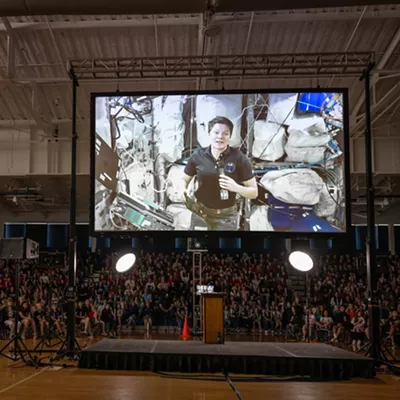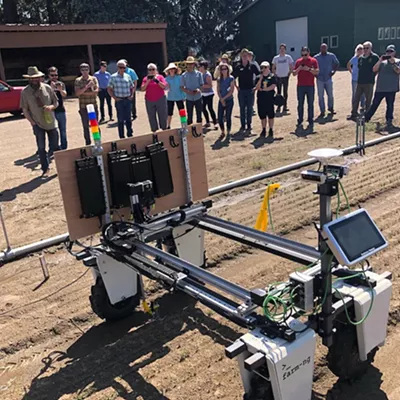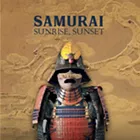Jennifer Hall, Spokane's link to the Slow Food USA movement, did just that recently after a busy summer dealing with sockeye salmon and a particular selective fishing technique known as reef-netting.
She not only got reef-netted salmon placed on the Ark, she steered them to Spokane this month for a well-attended fundraising dinner at Hills' Restaurant. It was the sort of dinner that can be a bit confusing.
Zack Chamberlain, a chef at the Seattle Art Museum's restaurant, Taste, had this to say about a similar fundraiser in Seattle: "Why are we eating the salmon right now when we are trying to save the salmon?"
It does sound counterintuitive, Hall admits, but, "You have to eat it to understand it," she says. "If you know it tastes better, you will be more likely to be active in preserving it."
Slow Food is all about foods endangered not only on the land or the sea but also "in danger of disappearing from the tablescape," Hall says.
In early August, Hall traveled to the waters off Lummi Island in the San Juans where she and three chefs -- Chamberlain, Mataio Gillis of Bellingham and Spokane's Peter Tobin (from SCC's culinary school) -- explored the reef-netting process. Hall even killed a sockeye with her own hands to understand every aspect of the reef-netting process.
& lt;span class= "dropcap " & R & lt;/span & eef-netting basically involves two vessels anchored side-by-side at the end of a long run of line and ribbon that mimics a kelp-forested reef and which guides migrating Fraser River salmon up from the depths and into a net slung between the boats. The net can be hoisted, cleared of fish and lowered inside a minute, with the crew guiding only the fish they want into a live well cut into the deck. All the by-catch is quickly lowered back into the sea, often without even being touched. After salmon calm down in the live well, crewmembers lift them out, pop a gill and place the fish in another well to bleed out. Then they are slush-iced and rushed to market. The minimal handling and relatively stress-free death is said to result in better flesh, better meat.
There are currently only 11 reef-netters in the world, all in the San Juans, keeping alive a fishing technique begun by Northwest Coast tribes thousands of years ago. It is hailed by fisheries biologists as the most selective of fisheries.
By the end of August, Hall had pitched the reef-netting method for consideration to be "boarded" on Slow Food's Ark of Taste at the group's national meeting in San Francisco, where it was sampled and accepted.
And on Sept. 24, Hall helped bring some of these reef-netted salmon to Spokane for a fundraising dinner in partnership with Save Our Wild Salmon and Trout Unlimited.
A dinner to save wild salmon with platters of the fish on the table is just what Chamberlain couldn't believe when he was asked to participate in a similar event in Seattle.
"Why are we going to kill 30 salmon, cook them, spice them, process them, make it our own dish, and bring them down to Pike Place -- where it's something we are trying to save but are gobbling them down like demons?" he asked one night after a dinner of reef-netted sockeye at Lummi Island.
The answer's as much about biodiversity as any government program to save an endangered species, Hall says. Just more personal.
If we diners don't ever get to taste the difference between farmed salmon and wild, we may never think critically about the lower Snake River dams, say, and how we balance preservation of wild salmon runs against wheat barging and hydropower.
There is more here to digest than simply food.
& lt;span class= "dropcap " & M & lt;/span & ichael Pollan, writing in Mother Jones, concluded that not only does Slow Food (brainstorm of Italian journalist Carlo Petrini to protest at a McDonald's at the Spanish Steps in Rome) tilt at the industrialized, global food supply, the movement also takes aim at all of us who are industrial eaters willing to eat chewy pinkish tomatoes imported in February from faraway fields.
At last week's fundraiser, diners were treated to full-flavored Red Fig tomatoes and green zebra heirloom tomatoes. There were also Ozette fingerling potatoes, brought by the Spanish from Peru to Neah Bay, where the Makah Indians have grown them since the 1700s.
These and other items are grown locally by chefs Tobin and Dave Hill as well as gardeners Dan Jackson, Deborah DiBernardo and Eric Rau.
The history, the flavor and the idea of being able to name the grower are all-important factors of Slow Food. It's about deconstructing the faceless, one-taste-fits-all industrial food chain and, instead, building personal connections and awareness.
At the convivial dinner, Bill Matt Sr., who traces his lineage to the Upper Spokane, told the group that "Salmon were 65 percent of the local diet. Then all of a sudden [after Grand Coulee Dam] the salmon were gone. Salmon was the blood of us. We were fish people. It is hard now for our children to understand that."
In the world of Slow Food USA, the Northwest is known as Salmon Nation, Hall says. "For me, that's why it was so captivating and important to nominate reef-netting ... to promote and preserve the heritage of salmon runs."
















